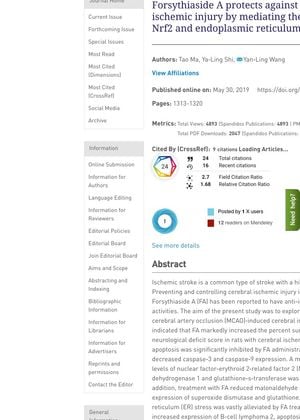Forsythiaside A Protects Against Focal Cerebral Ischemic Injury by Mediating the Activation of the Nrf2 and Endoplasmic Reticulum Stress Pathways
May 2019
in “
Molecular Medicine Reports
”

TLDR Forsythiaside A helps reduce brain damage from lack of blood flow by activating certain protective pathways.
In 2019, a study involving 64 rats found that Forsythiaside A (FA) significantly increased survival rates and decreased neurological deficit scores in rats with cerebral ischemic injury. FA also significantly inhibited cell apoptosis, as indicated by decreased expression of caspase-3 and caspase-9. The treatment led to an increase in the expression levels of nuclear factor-erythroid 2-related factor 2 (Nrf2), NAD(P)H quinone dehydrogenase 1, and glutathione-s-transferase, while reducing malonaldehyde expression and enhancing the expression of superoxide dismutase and glutathione. Furthermore, FA significantly alleviated endoplasmic reticulum stress. The study concluded that FA attenuated cerebral ischemic damage by activating Nrf2 and endoplasmic reticulum stress pathways.
